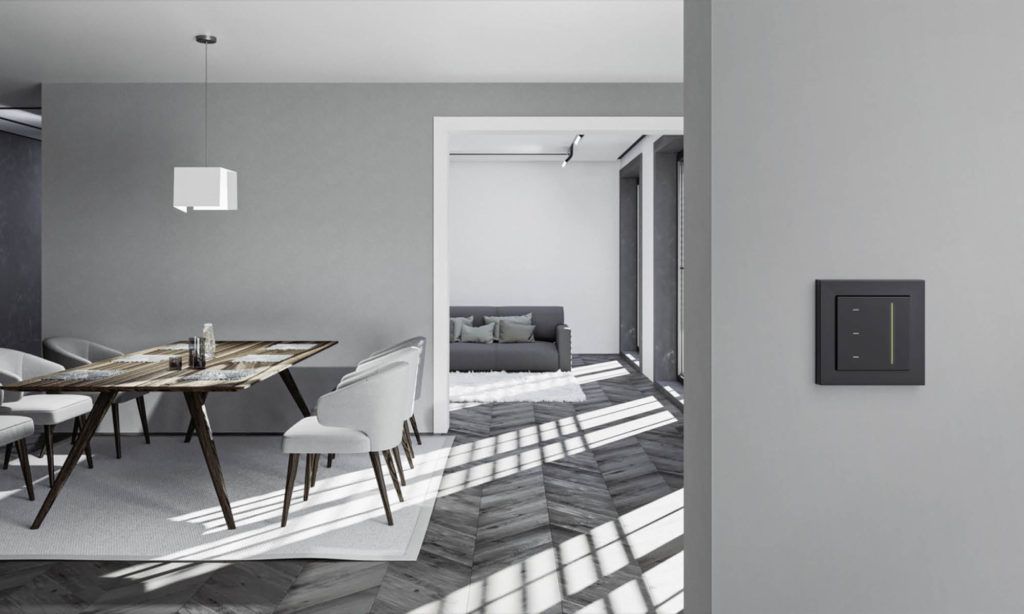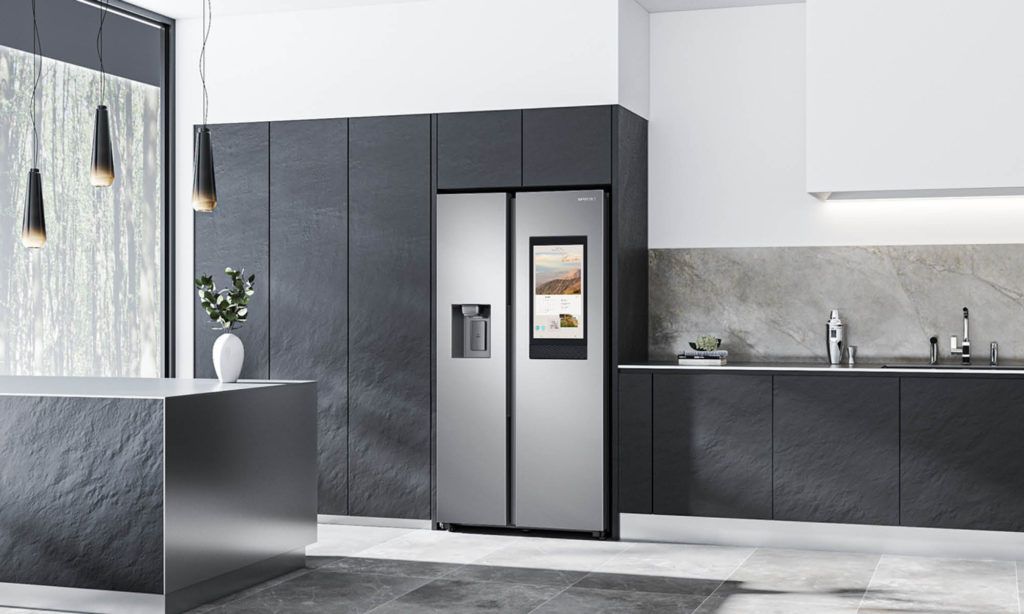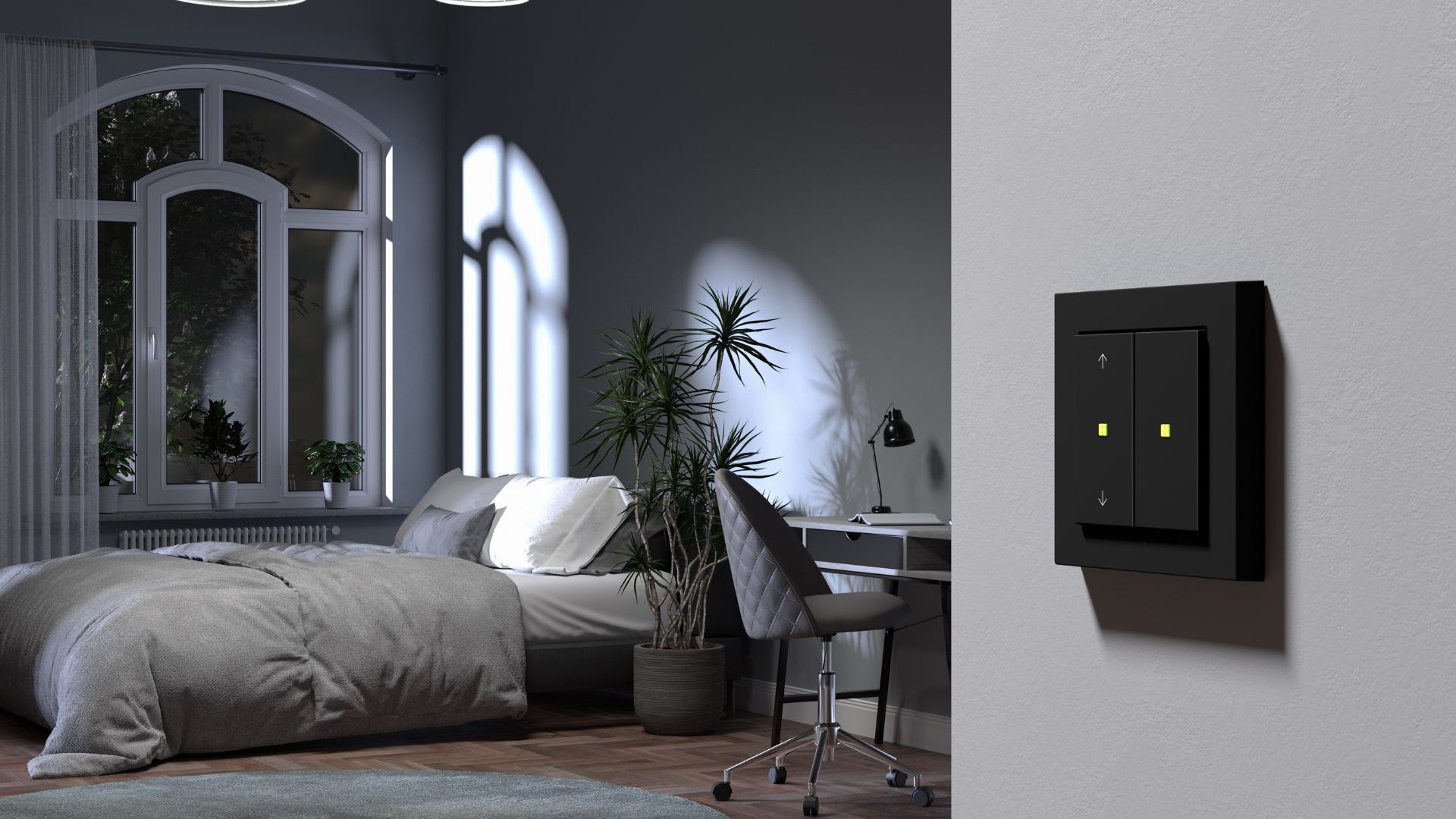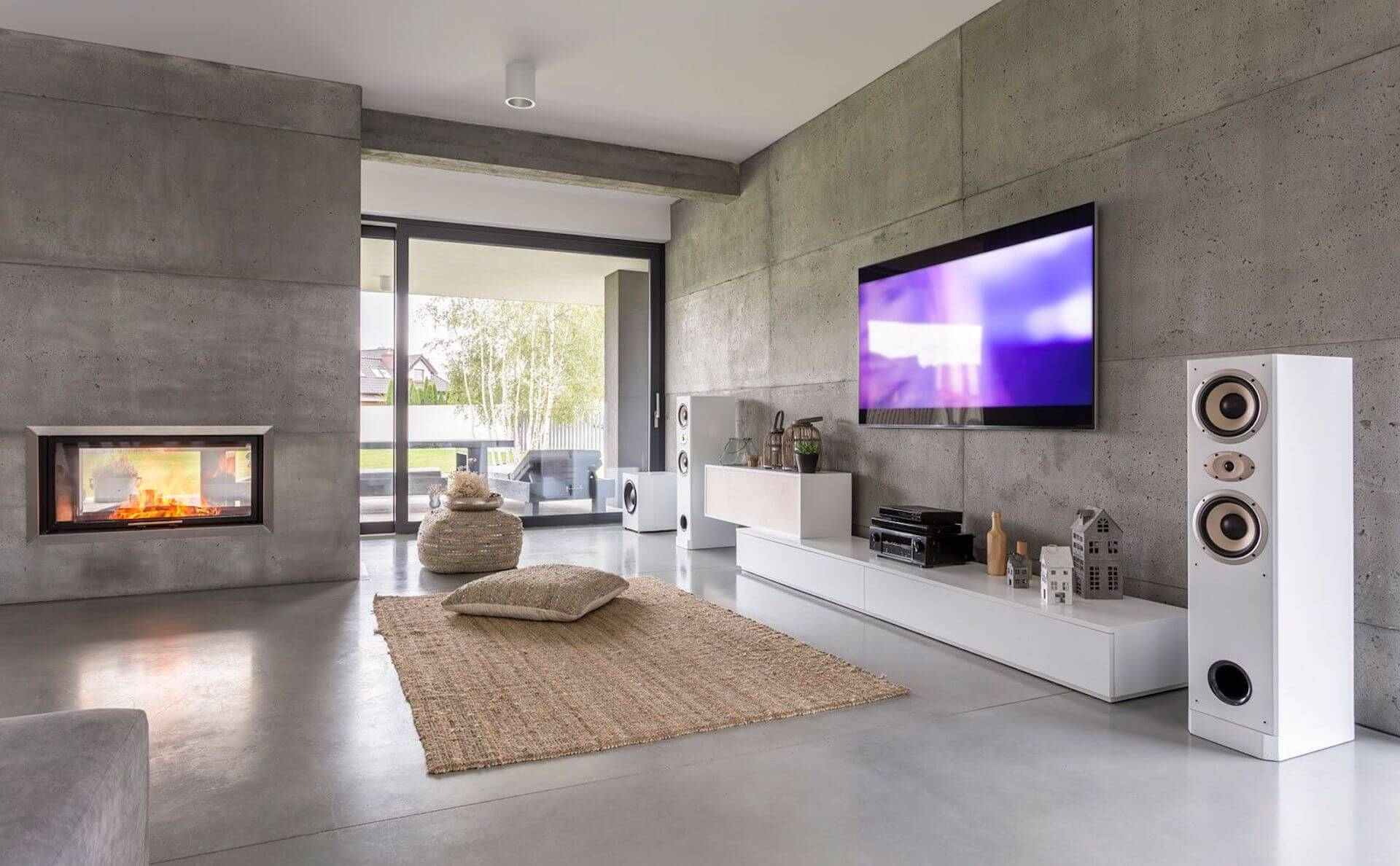
Modern technology keeps changing the ways we communicate, work, and live. More and more people want to make their homes “smart” – but what does that actually mean? How do intelligent buildings support us in our daily routines? In this article, we’ll take a closer look at those questions.
Blinds go down automatically at dawn, the heating stops at your preferred temperature, and your oven sends a notification once the pizza’s ready: welcome to the Smart Home. What may have sounded like science fiction a couple of decades ago has now become matter-of-course in many households.
Still, there are just as many people who don’t yet understand what a Smart Home is, exactly. If you want to learn more about intelligent building technology, here’s an overview of the most important features, systems, and benefits.
What is a “smart” house?
When we call a house “smart”, it means that you can automate a lot of processes. On the basis of one integrated network, different functions work together to facilitate your everyday life. You’ve probably heard the term “Internet of Things“ (short IoT) before: it describes the possibility of linking a variety of digital devices, even across large distances. This complex web of interconnections is what a Smart Home uses to coordinate and perform designated tasks at the right time – so it almost feels like it can “think for itself”.
What kind of technology is a Smart Home based on?
Essentially, every Smart Home system has two main components: sensors to give commands and actors to carry out commands.
Essentially, every Smart Home system has two main components: sensors to give commands and actors to carry out commands.
Sensors can be devices such as motion detectors, temperature controllers, utility meters for gas, water, and electricity, or even weather stations. They collect data and then send information to the actors via telegram.
This happens with a digital (and invisible) network in the background, commonly referred to as “bus system”. All technological components and linked devices need one central interface (a server or “hub”) to connect and synchronise their data.
Depending on what type of Smart Home is installed, the communication works via WiFi, radio signal, Bluetooth, or cable. Various operating elements enable you to configure, monitor, and control the processes within this network: smart switches, touch panels such as the Gira G1, voice assistants, and apps.

What is a home automation system made of?
If you’re planning a new build or a modernisation, you can integrate intelligent technology in many different ways. To figure out which option fits your individual needs, you should start with the question: wired or wireless?
Wireless systems communicate via radio transmission (based on standards such as Bluetooth, ZigBee, Z-Wave, or EnOcean).
Wired systems rely on special cabling networks to collect and process information.
Some of the most well-known wireless solutions are Philips Hue for smart lighting and Bosch Home Connect for smart household appliances – among many others.
Now, how do you know what Smart Home system is the best choice for you? The answer always depends on your specific living situation. That’s why Gira offers a wide range of options – from basic starter kits to highly complex installations.
Gira KNX system: wired and future-proof
When you’re building a new house or doing extensive renovation work anyways, you can take the opportunity to install a KNX network. This means that special cabling will be laid within the walls, alongside your regular supply lines. “KNX” refers to the worldwide universal standard for connected building technology. It was developed in the early 1990s with the goal of facilitating the compatibility between products from different manufacturers. One KNX system can comprise up to several thousand components, whose data and commends are controlled by the Gira HomeServer or the Gira X1 server.
Since all integrated devices “speak the same language”, you can extend or reconfigure your system anytime. This open-endedness is what sets a KNX Smart Home apart from other popular alternatives. Keep in mind though that you should always consult with a specialist before planning your installation.
Gira KNX RF and Gira System 3000: wireless and flexible
You’re living on a rented property or in an older building? In that case, wireless networks make it easy to retrofit smart technology without major renovations. You can start with the Gira System 3000: it combines the essential functions of lighting, blind, and heating control. To take your living comfort one step further, we recommend the Gira KNX RF system. “RF” stands for “radio frequency”, meaning that you can link a multitude of functions and devices within a wireless network. The most important requirement for setting up a Gira KNX RF Smart Home is what any common residential building has already: a 230 V installation which connects switches and socket outlets. Beyond that, you just need the Gira KNX RF top units along with same functional inserts used for the Gira System 3000: maximum functionality at minimum effort.
In what ways is a Smart Home improving your life?
Generally speaking, any type of building technology should offer three main benefits: comfort, efficiency, and security. How this plays out in reality can vary considerably, according to individual circumstances and requirements. By way of example, the option of dimming the lights via app may prove very convenient during cosy evenings on your couch.
Thermostats and room temperature controllers, on the other hand, help you save energy – while smoke alarm devices or motion detectors keep your home safe around the clock. Even your entrance area can be upgraded with special technology. Did you know what a smart lock is, for example? Gira Keyless In allows you to open the door via code or fingerprint – so you’ll never have to worry about losing your keys or locking yourself out.
Voice control: when your home does as you say
There are many ways to control smart systems. Apart from switches, touch panels, or apps, you can also rely on voice control. Once you have connected the Gira X1 to Amazon Alexa, a simple utterance will tell your Smart Home what is going to happen next: “Alexa, dim the living room lights by 50 percent!” or “Alexa, lower the blinds in the bedroom!”
Together with Sonos loudspeakers, you can control your sound system via voice command as well. Already got a Sonos One with integrated Alexa technology at home? Then you won’t even need an additional Amazon device to connect it to your Gira X1. Via the Gira Smart Home app, you can link several loudspeakers and configure individual scenes. A scene called “home cinema”, for example, might look something like this: as soon as you say “Alexa, start home cinema!” the music is turned off, lights are dimmed, and blinds are lowered.
What is a Smart Home doing to protect my personal data?
Of course, any digital system has to process sensitive data in some shape or form. That’s why you should take several precautions to prevent unauthorised access. Security tip number one: always use strong passwords and double-check assigned rights when installing a system. For all-round solutions, many manufacturers have developed specific guidelines to guarantee a maximum level of safety.
By way of example, Gira has a comprehensive checklist that covers every important step – from setting up the contract and having a specialist partner take care of the installation to securing separate data networks and establishing VPN connections.
If you want to access your system remotely via app, the Gira S1 is what keeps your lines of communication extra safe: this module encrypts all transmitted data in compliance with the EU’s General Data Protection Regulation (GDPR).
In KNX Smart Homes, personal data remain protected on the basis of KNX Secure – the first independent security standard for modern building technology. It ensures that all connections between operating units, devices, and servers are safely encrypted.
As you can see, there are many answers to the question “What is a Smart Home?” From pushbutton sensors on the wall to voice assistants – it always depends on how and where you want to make your life more convenient. Once you’ve started, there are virtually endless possibilities to explore.



